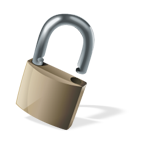Property Management Accounting: How to Read a Bill
 Thursday, December 17, 2009 at 11:15AM
Thursday, December 17, 2009 at 11:15AM There are some important things to take into consideration when reading a bill before entering it into your accounting system and then paying it. Below I have put together a step-by-step guide to easily recognize, record and pay an account payable to your company or business.
- Step 1: Locate who the bill is addressed to. This will help determine if it is your bill or if it is for a certain property that you account for. It might not even be your bill. A company I know of paid a utility bill for seven years they weren’t responsible for.
- Step 2: Read the Vendor Name. Is the vendor an existing vendor or a new vendor? New vendors typically need some form of authorization from a department, supervisor or an individual heading up a special/new project. This is also a good way to catch fraudulent billing (particularly vendors posing as governmental agencies).
- Step 3: Invoice or Statement? Always look for an invoice number. An invoice number is required to distinguish one invoice from another. A Statement might list an account number, but not an invoice number. As a rule you should never pay from a statement, because they are used to recap invoices already sent. A company can send you copies of any invoice on a statement. There is a good chance you have already paid the invoice listed on the statement, since statements typically come at the end of a billing period.
- Step 4: Locate any irregularities such as prior balances, increases, or credits. If there is a prior balance, always check your accounting for a check that might have already been cut for that amount. You do not want to pay twice. If your bill has drastically increased or decreased, you want to find out why before you pay.
- Step 5: Check the service or serviced dates. Make sure that dates do not overlap or have already been billed on another invoice. This also protects you from paying twice for the same service. Also make sure these dates correspond with the total invoiced amount.
- Step 6: What is it for? What service or product was provided? Make sure the description is clear, meter readings are correct, etc. This will help the accuracy of accounting, researching and disputing charges, and identifying potential problems. We caught a serious problem with one of our telephone lines when the usage quadrupled in a month.
- Step 7: Identify expense account(s). Locate what account(s) this bill will be expensed to. Do this from the beginning, because you don’t want to spend time fixing inaccurate accounting. An easy way to account for a regular bill is to create a recurring expense account that will pop up when a certain vendor is entered into the accounting system. This will also save you time in accounting time and/or labor paid for accounting.
- Step 8: Check the due date. You don’t want to pay your bill late. Check the terms, which will typically be net 10, 15 or 30. This is saying the bill is due either 10, 15 or 30 days from the invoice date. Due dates are usually at the top of your bill or on the remittance slip, if there is one. Also notice any late fees or interest on the balance due when the bill is paid late.
- Step 9: Payment. Be sure to know how you can pay your bill. Some vendors have many payment options (online, by phone, by ACH, etc.) while others may only accept checks or credit cards. If there is a remittance slip, remember to include it with your payment. This is the best way to ensure the vendor accounts for your payment.
- Step 10: Any additional information? Sometimes a vendor has extra information about your account listed on the invoice. The company could be closed on a certain day, there may be a change in service, discontinuation of a certain product or worse yet, an increase in interest rates.





